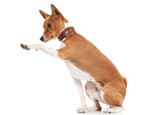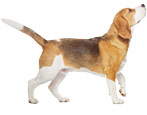Rules for walking and keeping dogs

All people are different and while some people do not like dogs, other people's pets frankly interfere with others. In some cases, a dog performing security or fighting functions can indeed pose a certain threat to others, and many fellow citizens are annoyed when animals walk uncontrollably where it should be clean and tidy.
Recently, Russian lawmakers have been paying close attention to this problem, because the legislative framework is becoming more extensive and detailed, and dog owners with experience may suddenly be faced with the fact that the new rules prohibit what was previously allowed.

The legislative framework
In terms of legislation on keeping dogs, Russia is in many ways ahead of a significant part of its neighbors: the laws of the Russian Federation prescribe the framework in which keeping, walking and other aspects of behavior with dogs is allowed. You can be sure that you are right or be punished in accordance with the following valid documents:
- Decree of the Government of the Russian Federation of January 21, 2006 No. 25 "On approval of the Rules for the use of residential premises";
- Federal Bill No. 52 "On the Sanitary and Epidemiological Welfare of Society" dated March 30, 1999;
- Law "On Veterinary Medicine" No. 4979-1;
- Civil Code of the Russian Federation, Articles 229, 230, 231, 232;
- Draft Federal Law "On Keeping Dogs in the Russian Federation".



In addition, in each region, local authorities have the right to adopt their own norms in the Code of Administrative Offenses, which in their own way regulate the peculiarities of behavior with dogs in the conditions of a region, territory, republic or even a separate settlement.
A striking example of the latter is the new law on keeping pets in Moscow, adopted in 2018 and entered into force on January 1, 2019. It assumes a number of innovations in the form of norms that were previously completely absent or were not considered strictly mandatory. For this reason, you should be guided by not only for federal regulations, but also for local regulations, which may turn out to be tougher than an unprepared dog lover would expect.
The state reserves the right to control numerous aspects of keeping pets, in particular, the purchase and registration of dogs, which are usually classified as representatives of potentially aggressive breeds. Breeding of dogs by the breeding method is also regulated at the legislative level, it involves obtaining permits. By itself, violation of any of the prescribed rules provides for certain sanctions against the offender - accordingly, the document prescribes the relationship between crime and punishment, as well as methods of collecting fines.


The owner's responsibilities usually include keeping track of whether so that the pet does not pose a threat to others, behaves adequately in public places, is properly and timely vaccinated. The owner is obliged to monitor hygiene and follow the rules for transporting a pet in public transport (if he uses the services of such). And not to allow ill-treatment of the ward on their part and to properly bury him in case of death.
The legal framework also includes in its competence issues of behavior with dogs, whose owner cannot be determined. Stray animals must be caught with subsequent transfer to special nurseries, and the document describes in detail how and on what grounds this procedure is performed, who is its executor and what rules must be followed in the process of performing duties.


Content rules
In any case, the owner bears full responsibility for the maintenance of his dog, and in fact it can pose a certain danger to the people around them or their property, cause discomfort or otherwise interfere with others. The logic of the legislators is aimed at the fact that a four-legged friend of man should not harm anyone.
This also applies to the cleanliness of streets and parks.
In a private house
Simple logic assumes that in a private sector, that is, in your own backyard, you are one hundred percent master of the situation and, to a lesser extent, interfere with those around you by any of your actions. From many dog lovers you can hear that they would have got this or that breed of four-legged pet if they lived not in an apartment, but in their own house, and this statement is true not only in terms of abstract convenience, but also according to the letter of the law.
There is no special legislative act that would tell you how to properly breed and keep dogs in your own yard, in Russian legislation. This does not exempt you from following any rules, since the same cruelty to an animal is punishable in the same way, regardless of the conditions in which you live.
At the same time, the restrictions will definitely be less if your territory is reliably fenced and does not give the dog a single chance to leave the home without your permission. Within a closed private territory, you naturally have the right to decide for yourself where and how to walk your pet, keep it on a leash and muzzled or completely free, and so on.


In the apartment
If in rural areas there are few restrictions on how to properly handle dogs, then in an apartment building, you will inevitably be much more constrained. The reasons for this bias are quite obvious: in multi-storey buildings, neighbors are located much closer to you than in the village, noise and unpleasant odors reach them much more strongly, and a significant part of the interior space is common premises, which, in addition to you, are used by other residents. ...
In general, it is worth familiarizing yourself with the law at least for general development, since many important points are spelled out there. We will highlight only the most basic points, which are often unreasonably violated and cause big problems.
- Your four-legged pet can only live on the territory of your own apartment, its permanent stay anywhere else is unacceptable... No reasoning that you have the right that the puppy has grown up and no longer fits in the apartment, etc., does not allow the owner to keep the dog in the common corridor, on the staircase and in the entrance, since the animal can interfere with other inhabitants of the house and represent danger to bystanders.
- The owner is obliged to ensure that the dog fulfills its needs only in those places where it will not interfere with other people. In Moscow, for example, they have already begun to build specially fenced areas intended for walking, they even install special boxes for collecting dog waste, which means that it is no longer possible to walk animals either in the nearest yard or in any other.
- Soundproofing most modern apartment buildings is still at an extremely low level, therefore your dog's barking can interfere with the normal functioning of your neighbors. In terms of time, the law limits animal noise not too harshly - they are forbidden to make noise only from 21.00 to 6.00 the next day... However, you cannot refer to the fact that you do not control the pet: the state is not interested in exactly how you will enforce the requirements, which means that you yourself have to think over the training.
- Even if you decide to walk with your four-legged friend just like that, without potential environmental pollution, you must avoid visiting crowded places. The behavior of an animal can be difficult to control, especially if it is not sufficiently trained, therefore, you should avoid locations where there are always a lot of vacationers or just passers-by.
- Regardless of what breed your dog is, you must walk her on a leash and in a muzzleto avoid conflicts with people or other dogs. This is done so that you do not have problems: even if your dog is small and clearly cannot do much harm to a passer-by, he, frightened of a sudden attack, has the right to demand compensation. In addition, all walking dogs must be supplied with special tokens, which indicate the owner's contact information: this allows you to return home lost pets and find irresponsible owners if the dog does trouble.
- A person walking an animal is directly responsible for it. and is obliged to control the behavior of his four-legged friend.
Since it is foolish to demand due conscientiousness from children, independent walking of a pet is allowed only for persons who have reached the age of 14, otherwise they can move with the dog only in the company of an adult.




This is not directly spelled out in the law, but sound logic suggests that any comments from neighbors related to the maintenance of your pet should be treated with maximum understanding and a willingness to compromise. Deep down, you may consider the attacks unfair, but it is possible that your neighbors are principled and, in response to your categoricalness, will find a way to legally punish the intractable dog lover.
Among other things, some dog breeds are defined as potentially dangerous and aggressive. The law does not prohibit keeping such in an apartment, but you must understand that they are included in the list for a reason: if your dog was taken out specifically for solving hunting or fighting tasks, he may misunderstand a particular situation. At the same time, his physical data allows the animal to cause serious harm to any enemy, whoever it may be.
Dogs that pose a potential threat to others include the following breeds.
- Fighting dogs: some types of terriers, mastiffs and alabai, bulldogs and Caucasian shepherd dogs. All these animals were bred specifically for battles, aggression and readiness to get involved in a fight are literally in their blood. Such a dog needs an eye and an eye, and even regular training and professional education do not give one hundred percent guarantee that the dog will never attack a person in any situation without the owner's permission.
- Hunting dogs: many types of terriers, huskies, retrievers and so on. Such a pet with a relatively low probability of attacking a person, but at the level of instincts he is accustomed to attacking small living creatures, subconsciously considering it his prey. It is easy to guess what the reaction of another dog owner will be if your dog attacks his pet, but your animal is focused on achieving the maximum result, that is, killing. In addition, four-legged hunters are very fond of an active way of life and require significant physical exertion, and therefore it will be difficult for them in the apartment, and they can make a lot of noise.
- Watch dogs: Dobermans and Rottweilers, bullmastiffs, German and Asian shepherds. Such an animal carries out service throughout its life, even if you do not expect anything like it from him. Such a pet has hypertrophied animal instincts: they clearly understand the line between their own and someone else's (doing it in their own way!) And are ready to defend to the last what they, in their opinion, have the right to do. Being trapped in a tight space, such pets can suddenly exceed their powers, not allowing even the owners to decide which part of the apartment belongs to whom, and it will be very difficult to cope with such a headstrong and strong opponent.
- Shepherd dogs - most species of shepherd dogs and some similar breeds. This group of dogs is very similar in characteristics to the above-described guard brothers: the animal knows that it has been assigned to guard certain property, and in its understanding, the fulfillment of this task means the banal exclusion of any outsiders. Predictably, outsiders include any guests, neighbors, even if the meeting took place in an entrance that is "outside the jurisdiction", and sometimes the owners themselves.
Pet aggression can increase if you do not provide him with regular long walks and do not engage in training.
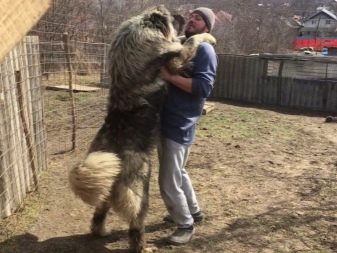



How should you walk?
At the moment, the issue of legislative regulation of dog walking is in an uncertain state, since some of the standards have already been adopted and put into effect, and the other part will be relevant only in 2020. In particular, The law still allows that many small breeds of dogs will not need a muzzle, but there is still no specific list of breeds that cannot be outdoors without a leash and muzzle.
Among other things, the federal legislator also delegates some of the powers to regulate this issue to local authorities, so that one should be guided not only by all-Russian, but also by regional norms.
If we talk about general provisions, then the situation is as follows.
- Walking an animal cannot contradict the principles of universal safety. This means that the dogs themselves, the people around them, and other animals must be safe.
- The owner is obliged to monitor the integrity and safety of not only living beings, but also property, owned by legal entities and individuals.The animal should not in any way contact with him, and even more so - damage someone else's property.
- A walked animal can only be walked under the direct supervision of the owner or a responsible person. Self-fermenting of the dog on the streets is not allowed.
- A number of territories involve the movement of dogs of all breeds only on a leash and this is mandatory. Such places include any common areas, including common premises in multi-storey buildings; a similar requirement is put forward when crossing the roadway with a dog.
- The owner is obliged to maintain order and cleanliness in the streets, therefore, his duties include cleaning pet waste. It is necessary to clean up after a four-legged friend even on the territory specially allocated for walking dogs, and if the walking route does not provide for the infrastructure for dog lovers, you will have to carry a special package with you for such a case.
- If local authorities, as happened in Moscow, have allocated special areas for walking pets, then walking pets in any other place is prohibited.
- After the list of potentially aggressive and dangerous dogs is finally approved in 2020, walking of representatives of the breeds included there will be allowed only with a leash and a muzzle.
Any free movement of such animals without the specified special equipment will be possible only in an open-air cage, which is properly protected from unauthorized escape.




The last point is of the greatest interest from dog lovers, because the fact of a change in the rules in the near future is no longer in doubt, but it is not yet finally clear who exactly it will affect. At the moment, there is only a draft resolution prepared by the government, and so far it includes 69 names of breeds and their derivatives at once.
In general, the list is guided by international legislation adopted by the CIS countries back in 2007, but as a result, the number of dangerous tetrapods can be either reduced or increased.
Permitted and prohibited places for walking
As we already understood, in the city the dog cannot be walked anywhere: neither the adjoining territory, nor the playground, nor any other public places are suitable for this. The administrations of the largest cities are trying to equip special sites for this, but even if there are none in your region, there are certain requirements for the walking area, which increase the safety of others and can give the animal the physical activity it needs.
First of all, the space must be large enough, at least 400 square meters of floor space - only there the dog can run freely. The edges of the perimeter should be significantly removed from the main infrastructure facilities: for example, residential buildings and any public buildings should be located no closer than 25 meters from the edge of the site, and for hospitals, playgrounds and kindergartens, as well as schools, the distance should be even greater - at least 40 meters. Even if dog owners are responsible for their duties and clean up animal waste on the street, the coverage of the walking area in the form of sand or grass should be changed at least once a year.

Since the above-described, and even the fenced-in area now exists far from everywhere, pets are allowed to walk in any park, but only with a muzzle and a leash. At the same time, the administration of each park has the right to put forward its own requirements, so this issue should be clarified already on the spot.
In general, the rules for walking in parks are as follows. First of all, the park is a territory for people, therefore the leash should be short, the dog has no right to run freely throughout the territory and disturb others.An exception is usually made only for babies under the age of three months, but even then, a lot can depend on your ability to prove that the dog is not older. Even in the park, you are obliged to maintain silence at night, however, the time frame here is different - not from 21 to 6, as in an apartment, but from 23 to 7.
Drunken owners are strictly prohibited from walking the animal in the park, since in this state it is difficult to control the behavior of a large and strong animal.
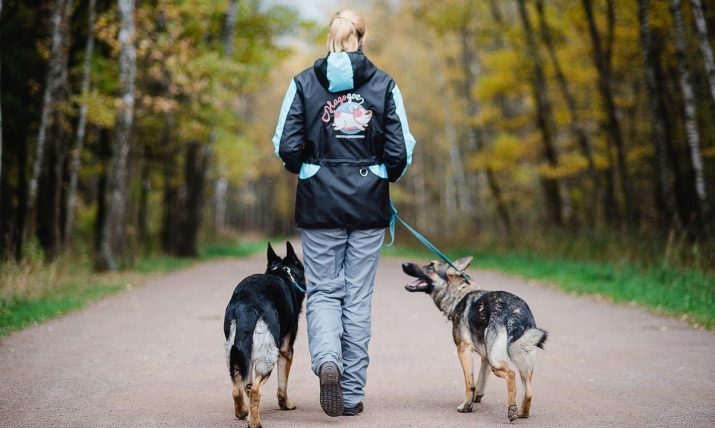
Transporting an animal to a walking area or transporting it for any other purpose may involve the use of public transport. Small pets (weighing up to 5 kilograms), which fit in a special cage, are easiest - they can be considered cargo and are transported free of charge. A large animal may require payment for a separate seat (for a growth above 40 cm - two places), and it must be muzzled and on a short leash.
The carrier has the right to require the owner of the four-legged passenger to present documents, including a veterinary certificate of timely vaccination and a document on the condition of the dog.
In practice, it is sometimes easier to check with a particular carrier about his own attitude towards transporting furry passengers than to unsuccessfully prove on the spot that you have a legal right to transport, and then go to court because of a violation of your rights.
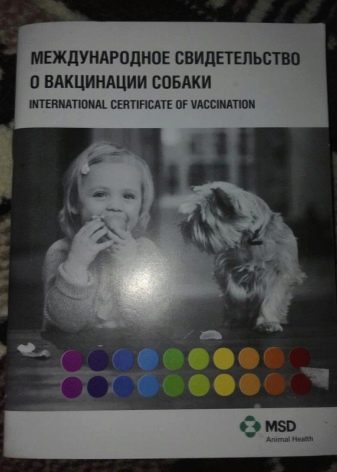

Penalties
Governments are often not overly picky about dog-walking violations, but that doesn't mean that you specifically will never be subject to sanctions that could come as an unpleasant surprise. For example, many owners do not even suspect that there is a list of places where it is strictly forbidden to walk pets. This infrastructure includes beaches and playgrounds, cemeteries and venues for public events, the territory of educational and medical institutions. The fine for such an offense can range from 1 to 2 thousand rubles.
A separate punishment can be obtained for walking a pet without a muzzle and a leash. The fine here depends not only on the region (prices fluctuate for all offenses, being relatively tied to the average income level by region), but also on where you allowed yourself such liberty. For example, travel without special means in public transport will cost from 500 to 1000 rubles, and the stay of a dog in the same form in a store or a public place can result in 1-2 thousand rubles.
Your apartment is considered a private territory, and you are not required to coordinate your decision to have a dog with your neighbors, however this rule irrelevant for hostels and communal apartments.
This is unlikely to become an obstacle for a true lover of human four-legged friends, but a fine of up to 2 thousand rubles will have to be paid.


Situations connected with violence in one way or another are punished even more harshly. For example, holding dog fights is regarded as cruelty to animals, but the sanction for such an offense is still relatively modest - only 2.5 thousand rubles. It’s a different matter if the owner is smart enough to set the dog on a person - even without any significant injuries, the potential victim has the right to demand a fine of up to 5 thousand rubles. If everything has gone too far, and a person has suffered from your dog (it does not matter, at your behest or through an oversight), a monetary penalty alone may not be enough: in the event of serious injury, the owner or any other responsible person may even face criminal liability.
That's why walking dogs of large breeds is prohibited to persons who, for certain reasons, cannot fully control the ward or be responsible for him. Children under 14 years old, drunk or insane for any other reason, people cannot walk pets, and the perpetrator who committed such a violation, even without any consequences, may incur administrative punishment.

Where to complain in case of violations?
You can sincerely love dogs, but even then you are unlikely to agree that a dog that constantly barks at neighbors, regardless of the time of day and norms of behavior, is normal. The legislation prescribes what to do in this situation in order to solve the problem.
Humanly, you need to start with a conversation with the owners of the raging dog. It is possible that they themselves are not bad people, they do not know about the indecent behavior of their pet, because he barks in their absence, and at your very first request they will take steps so that the misunderstanding does not happen again. This is the fastest and most correct way to solve the problem, but Complaints to the regulatory authorities should be written only if your attempt to resolve the issue peacefully was unsuccessful.
The first instance for those who did not get justice from a neighbor is district police officer, who will also start with a preventive conversation, and only in the absence of a result will impose a fine on the offender.
If suddenly an official refuses to accept your application for any reason, the victim has the right to apply directly to Rospotrebnadzor, and, alternatively, to the administrative court of his region.


For more information on the rules for walking and keeping dogs, see the next video.



